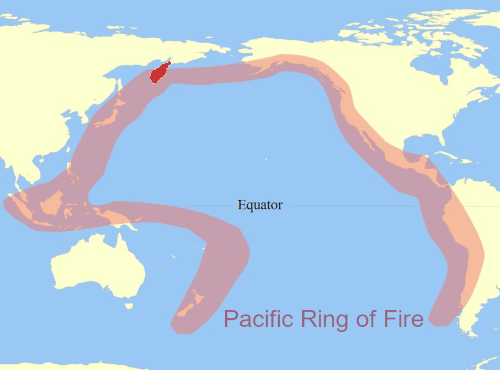
Circle the area on this map

A. In 1960, a 9.4-9.6 magnitude earthquake struck Valdivia, Chile. That quake was six to eight times stronger than the one last week. The second-largest earthquake occurred in Alaska in 1964, followed by one in Indonesia in 2004 and another in Japan in 2011. All of these big earthquakes were on the Ring of Fire.
B. Indonesia recorded 58 active volcanoes since 1950, according to the Smithsonian Institution. Japan was second with 44, followed by the United States with 42, Russia with 33, and Chile with 19. Indonesia also has eight volcanoes currently erupting, more than any other nation.
A. All of the factors are important, but where the tectonic events strike largely determines how many people are killed or displaced. The strongest recorded earthquake in Chile killed 1,000 to 6,000 people. The second-largest quake killed 113 in Alaska. The third biggest, in densely populated Indonesia, killed 227,898 people. Two far weaker quakes in China were the deadliest, killing between 500,000 and 600,000 people.
B. Most of the earthquakes and volcanoes on the Pacific Ring of Fire are on subduction zones, where the heavier and denser ocean plates sink beneath the lighter tectonic plates of the continents. This tectonic movement over billions of years has produced the deepest ocean trenches and the highest mountain peaks along the borders of crashing plates.